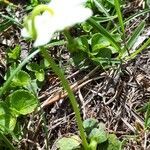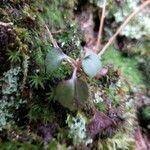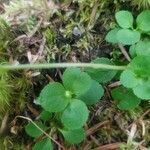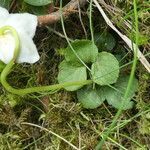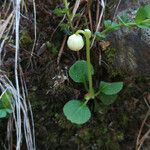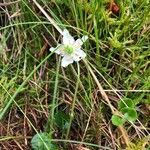Plants arising from horizontal roots, 0.3-3 dm. Leaves: petiole 5-20(-30) mm, channeled adaxially, glabrous; blade dull and light green abaxially, shiny and green adaxially, 6-22 × 5-20 mm, base rounded to obtuse, apex obtuse to rounded. Inflorescences: peduncle 3-15 cm; peduncular bracts absent or 1(-2), oblanceolate to elliptic or orbiculate, (2.5-)4-4.5 × (2-)2.7-3.4 mm, membranous, margins entire or obscurely erose-denticulate. Flowers: calyx lobes spreading or reflexed in fruit, green or green with margins whitish green, 2-2.5 × 1.5-2 mm, margins erose-denticulate, apex rounded to obtuse; petals ovate to broadly ovate, 8-12 × 4-8 mm, margins minutely denticulate; stamens 4-8 mm; filament base 0.4-0.8 mm wide; anthers 2.2-2.5 mm, thecae whitish yellow to tan or light brown, tubules golden brown to brown, 0.4-0.8 mm, abruptly narrowed from thecae, lateral walls not touching, pores 0.2-0.4 × 0.2-0.4 mm; ovary smooth; style 2-5 mm; stigma 1.4-3.5 mm wide, lobes erect. Capsules subglobose, 4-8 × 5-9 mm. 2n = 22, 24, 26, 32.
A herb. It keeps growing from year to year and is evergreen. It has slender rhizomes or underground stems. The are 0.2-0.8 mm thick. The above ground stems are erect or curve upwards. They are 1-5 cm high. The leaves are in 3-4 groups of 2-3 each. The leaf stalks are 1-1.5 cm long. The leaves are dark green on top and pale green underneath. The flowers are white and nodding. The fruit are capsules which are erect and 5-6 mm across. They open by 5 valves. There are many small seeds.
